Chasing the 9 Emperor Gods
I was excited to join the 9 Emperors God Festival again this year. Naturally, when I saw the invite from Events Planning, Malaysian Cultural Group, I jumped at the opportunity. I vividly remember when I joined the event five years ago. I was heavily pregnant with my first born. It did not occur to me then it was a taboo for pregnant women to join the festival as it clashes with the 9 Emperors ‘qi’/energy. As I entered the main temple, many onlookers were looking at me strangely. Not to offend the Gods and worshipers, I exited the main temple. Five years later, my firstborn has now returned with me to witness the festival yearly whenever we can.
This year, I met the group in front of ‘Liang Kee’ coffee shop. We registered and were ushered to the back of the coffeeshop. The walk started around 11.20am as we walked into the temple. , Our guide, Sean, explained to us the various stalls temporarily constructed selling various offerings like red and yellow tortoise bao/buns, flowers, talisman bangles and services like mole remover for better facial feng shui. There were charcoal decorated with various ornaments symbolising ‘fuel’ and ‘energy’ for the altar. He was assisted by Joan, who was just as enthusiastic as he is.
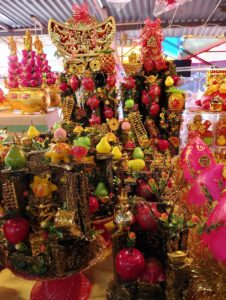
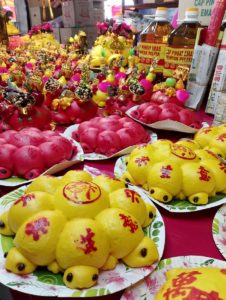
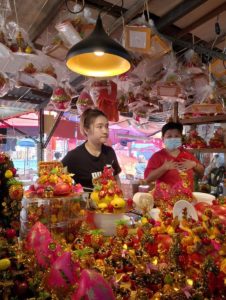
The story goes that a wandering Chinese opera group fell ill with malaria in Phuket, so they switched to a strict vegetarian diet and prayed to the Nine Emperor Gods for their health. The group made a full recovery and the tradition has continued ever since.
As we approached the main temple, there were two tall towers at both sides of the main temple. Facing the main temple, on my left is the north star where you pray for longevity while to the right side, you pray for smooth navigation in life.

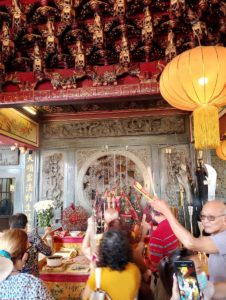
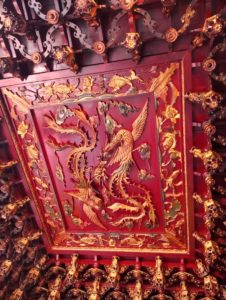
We also learnt that there is a ‘Central Bank’ of the temple where you could borrow money from the temple during the festival. By borrowing the temple’s money, you are borrowing the 9 Emperor’s luck and you would need to repay 3 times more of the amount you have borrowed. Bad omen would fall on you if you don’t repay your loan.
The pilgrims are dressed with white attire and a white bandana. They would undergo a 10 days abstinence and vegetarian diet. Traditionally, they were to stay in the temple’s dormitory and it was a festival like atmosphere. Sean explained that some of the pilgrims who have been coming to stay at the dormitory, have been coming for 4 to 5 generations. Since it is a once-a-year affair, it is people reuniting and catching up on news, having not met for the past year. In this case, it is after 3 years since Covid19. Since the government has not changed the ruling on public dormitory stays for festivals for large crowds, the dorms were empty, void of human crowd. We went in for a look around and saw the rudimentary beds and shelves where pilgrims store their clothing/things. We saw new talisman placed at the entrance door, with ‘uncooked rice’ strewn on the floor. Sean explained a new talisman would be pasted on the entrance while rice, tea and salt would be strewn on the floor every festival year to bless the grounds of the dormitory on the 1st day, even though no one lives there.
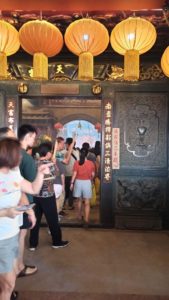
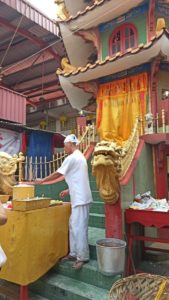
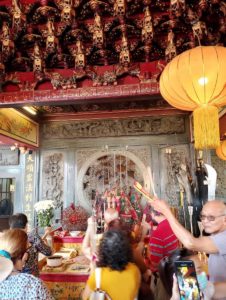
We went in to the central kitchen where they prepare and cook vegetarian meals for the 9 days. We saw strong men stirring a huge wok filled with rice vermicelli noodles. They had to take turns to stir as it was heavy to stir huge amounts of noodles. People could come to the temple to eat for free, vegetarian meals. They start serving 11.30am and 4.30pm; though time varies if it is on 3rd, 6th and 9th days where they need to feed the 5 direction generals. There is a place with tables and long wooden benches where you could sit and eat your meal. We then went to see the back of the kitchen. We saw the wok that fuelled the cooking was not by gas but wood. There were two elderly men shifting the wood inside the furnace. Such an arduous task. Imagine the heat! We went to see the 3 sedan chairs; one for the 9 Emperor Gods (九皇大帝) the second for Finance Minister (田府元帅) and another for Health Minister(林府太师).
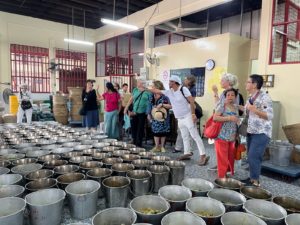
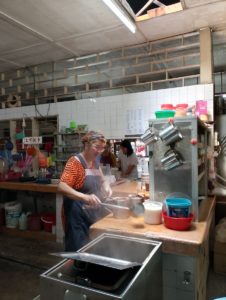
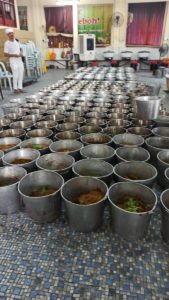
We went off for lunch and would meet up again for the feeding of 5 direction generals around 2pm. By then, most people went back as it was hot and humid.
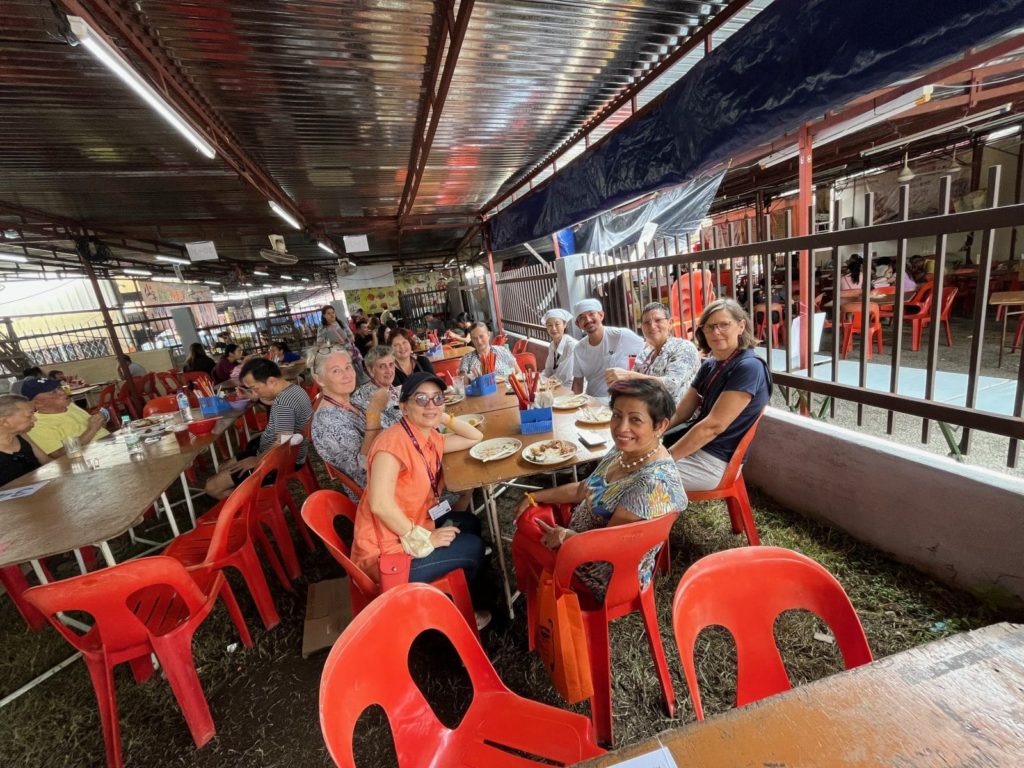
The beating of cymbals signaling the arrival of the 5 direction generals with a man dressed in black is the chief priest. The 5 direction generals each took turns to climb on a wooden bench and perform a beating with their sword on their chest and thrusting the sword to their back. After that, the central general wearing yellow bandana went to place the flags on all directions of the temple; east, south, west and north. Central camp chief placed the flag after the chief priest blew a horn and some fruit offerings were placed together with some joss sticks.
This process of placing the 5 directions flags took about 30 minutes and later, they went to the lamp pole to bless the lanterns. It is said the 9 lamps need to be lit throughout the 9 days. The 5 direction generals then went to the central kitchen to bless the food as well as the cooking utensils and all items in the kitchen. Since the encampment of direction flags were following north, south, east and west, some of the shrines were at someone’s carpark porch. We followed the procession and traffic had to be controlled during these times. A lot of communication and preparation had to be made for this festival to materialize. The whole process ended around 3.30pm and we bid farewell to each other, each agreeing to stay in touch. I decided I would return on the 8th day for the ‘ping ann qiao’ also known as the ‘peaceful bridge’.
Elena Shim
